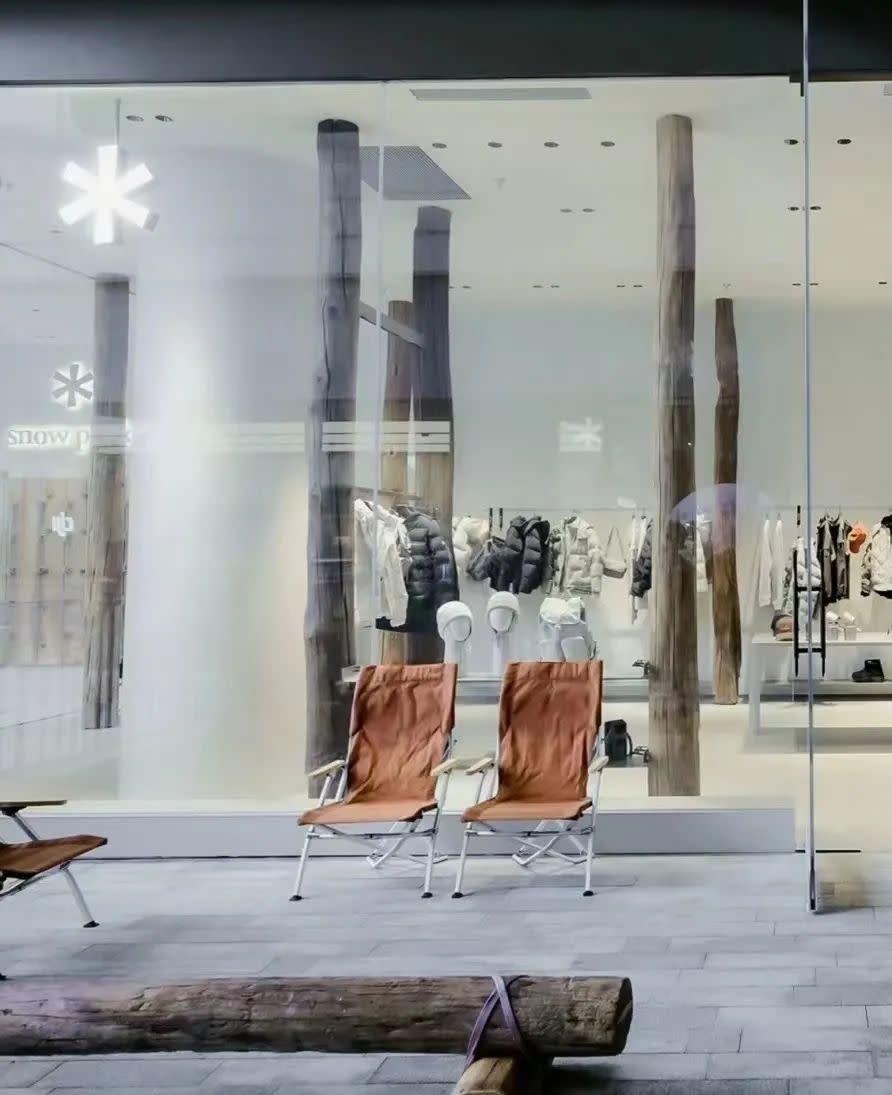China Insight: Golden Opportunities Highlighted in the 2023 Results of Chinese Brands

In a seemingly gloomy start to 2024, coupled with the World Bank’s prediction that China’s GDP growth will drop to 4.5 percent this year and fall further to 4.3 percent in 2025, pessimism over the country’s economic outlook continues to rise. However, the preliminary 2023 results of Chinese footwear and apparel brands have led the fashion industry to take a fresh look at the nation’s consumer market.
There has been a clear recovery from the sluggish market conditions seen following the lifting of pandemic-related lockdowns, with strong rebounds being reported by markets in different regions of the country by the end of 2023. For example, slightly more than 3 million tourists visited Harbin during the New Year’s Day holiday alone, with total tourism revenue of 5.914 billion yuan, triple the revenue of Sanya. According to the Chengdu Company of China Resources Land Ltd., the annual turnover of Chengdu MIXC malls exceeded 6 billion yuan, representing double-digit growth compared to 2022.
More from WWD
The popularity of Harbin indicates the potential of China’s domestic market while revenue growth of Chengdu MIXC in 2023 is further proof of the growing demand for fashion and luxury in China’s second-tier cities. Against the backdrop of an overall slowdown in growth of domestic demand, these two cities in the northeast (Harbin) and southwest (Chengdu) demonstrate the liquidity and “reservoir capacity” (the ability to convert resources into reserve liquidity) of the Chinese market.
In terms of the consumer fashion sector, a weak recovery was the main theme for 2023. The sporting goods sector alone fell by more than 30 percent cumulatively during the year, with a more than 70 percent drop in the market value of Li-Ning, more than a 49 percent decrease of Xtep International and an 8 percent decline of sporting goods retailer Pou Sheng International. There was at least one bright spot: The 2023 interim results showed that Amer Sports, which was acquired by Anta — whose revenues exceeded Nike’s performance in the Chinese market last year — for $5.2 billion in 2019, filed with the Securities and Exchange Commission in the U.S. for an initial public offering in a key “stepping stone” for Anta’s internationalization strategy.
Amer went public earlier this month on the New York Stock Exchange but the response to the IPO was weak, with shares having to be discounted initially and then rising only 3 percent, giving the group a market capitalization of $6.3 billion.
Taking the fashion footwear and apparel sector as the focus, Peace Bird Group disclosed that its performance in 2023 was expected to increase by 125 percent, while third quarter net profits of men’s clothing brand Septwolves soared by 545 percent following significant growth in the first half of 2023. Biemlfdlkk maintained concrete double-digit growth, with net profit attributable to owner of parent company increasing by 25 percent.
The 2023 first-quarter results showed the sports and outdoor category was leading the entire fashion consumption sector but by the end of the year its performance had stalled. This led some financial institutions — including CICC, Goldman Sachs and JP Morgan — to downgrade Li-Ning. JP Morgan stated that Li-Ning’s single-brand strategy faced more uncertainty than a well-executed multibrand portfolio in the context of the uncertain macroeconomic environment and industry-wide challenges.
Contrary to the impression that Li-Ning is a single-brand sportswear company, the group actually has eight brands in its portfolio, including Lotto, Kason and DHS, among others. However, these brands are generally no longer leading ones; online search volume was far less for them than for the popular sub-brands of Anta, such as Fila, Descente and Arc’teryx.
However, Anta wasn’t immune from the market turmoil, either, with a slowdown in growth of its main brand, while with 60 percent year-over-year growth, Descente replaced Fila to become the group’s fastest growing subsidiary. Prior to this, Anta spent a decade in transforming Fila from a loss-making century-old brand to a leading label.
In addition to revenue, the different focuses of these brands — such as fashionable sports and trendy youth for Fila, professional sports and high-end outdoor for Descente and “win the hearts of the urban middle class” for Arc’teryx — have contributed to the diversification and globalization of the Anta Group.
At the beginning of 2024, the Japanese outdoor brand Snow Peak opened its first flagship in China, in Taikoo Li on the Bund. The store is operated by Biemlfdlkk, the Chinese apparel company that has bucked the trend and achieved growth over the last three years. With a 20-year history, the Chinese-funded group also owns the Cerruti 1881 and Kent & Curwen global trademarks, giving it a portfolio of five major brands.

What is clear during this transition of the Chinese market is that brands with long histories and profound cultures will always be preferred by the nation’s consumers. For local companies, utilizing the product culture of international brands to supplement their expansion has become a strategy toward potential success. Despite the boom in demand for sports and outdoor products over the last few years, the penetration rate of professional sports products in China is still far lower than that in the U.S.
The benefits of a multibrand strategy can also be seen in the fashion sector, as has been repeatedly proven in the Chinese market.
In 2023, the Ellassay Group acquired ownership of the regional operations of Canadian down jacket brand Nobis in mainland China and Hong Kong and Macao through a joint venture operating company. According to data released earlier, Nobis reported revenues of 287.2 million Canadian dollars in the first nine months of 2023.
The Nobis deal added to Ellassay’s growing portfolio that already includes its main Ellassay label, which saw sales rise 10 percent year-over-year; the British contemporary fashion brand Self-Portrait, the German high-end women’s clothing brand Laurèl, and the French designer brand Iro Paris, all of which also saw fast growth of 51 percent, 35 percent and 55 percent, respectively. Meanwhile, American brand Ed Hardy registered growth on par with last year. During the year, Iro, Self-Portrait, Laurèl and Ellassay added 14, 12, nine and eight stores, respectively.

Generally speaking, the construction of a multibrand portfolio is achieved through two approaches: internal incubation and external acquisition. Li-Ning Group’s “Li-Ning China” brand, which has a high unit price and is mainly tailored for young consumers, is a mid-to-high-end fashion brand incubated internally on the basis of the well-known Li-Ning brand, in line with the “Guochao”(rise of domestic brands and resurgence of traditional style and cultural elements) and the dividend of cultural self-confidence. Ellassay, on the other hand, is a typical company that relies on acquisitions to realize an international multibrand matrix.
However, the rapid gains in the multibrand strategy have also exposed a challenging issue and bottleneck facing China’s domestic fashion groups: how exactly to build a true fashion brand? Or rather, how can brand power be significantly enhanced? Meanwhile, another question is how local brands, which once enjoyed rapid growth during the Guochao trend, can quickly move to the next phase as the frenzy cools down.

The national men’s clothing company Septwolves offers a potential strategy given its results gained in 2023. Focusing on the jacket category, it proved that a single brand or even a single category can also deliver strong performance. In addition to long-term development of product, technology, sales channels and other aspects, Septwolves launched a series of brand reinvention programs in 2023. From empowering the development of the brand with overseas designers to creating new products with technological fabrics and independent research and development, it has upgraded its operations, from the products to the stores.
Peace Bird contributed another surprise in 2023. According to its preliminary results released in early January, the group has achieved net profits of $57.7 million, an increase of about 125 percent year-over-year. The growth in profits came despite a decline in revenues, showing that in the current turbulent market environment, a strict control of discounts and the closure of inefficient stores can accompany a strategy of strengthening the brand and products.
Despite the poor results of many of China’s leading fashion and apparel companies, what was clear is that the acquisition of international brands, supplemented by channel access, can be effective strategies in bucking a sluggish market growth that has become the norm. For Chinese domestic companies, brand power can help protect their long-term development while they continue to improve their products.
Best of WWD

 Yahoo Finance
Yahoo Finance 